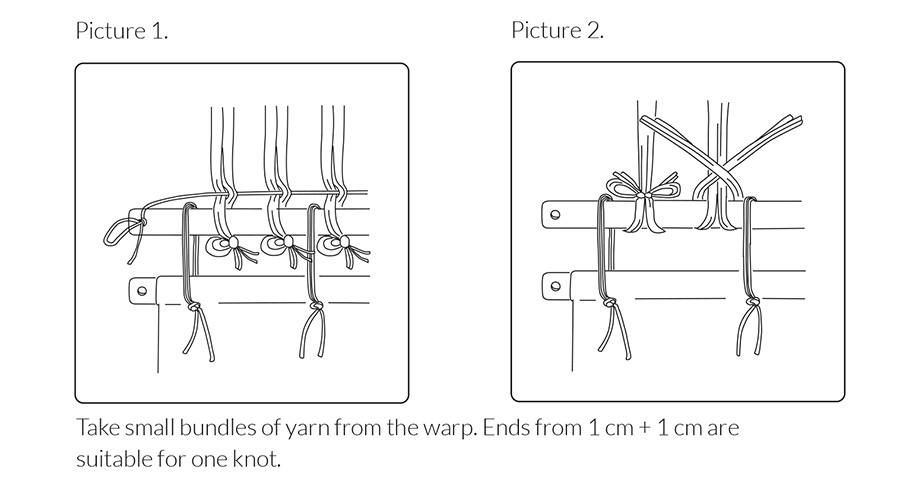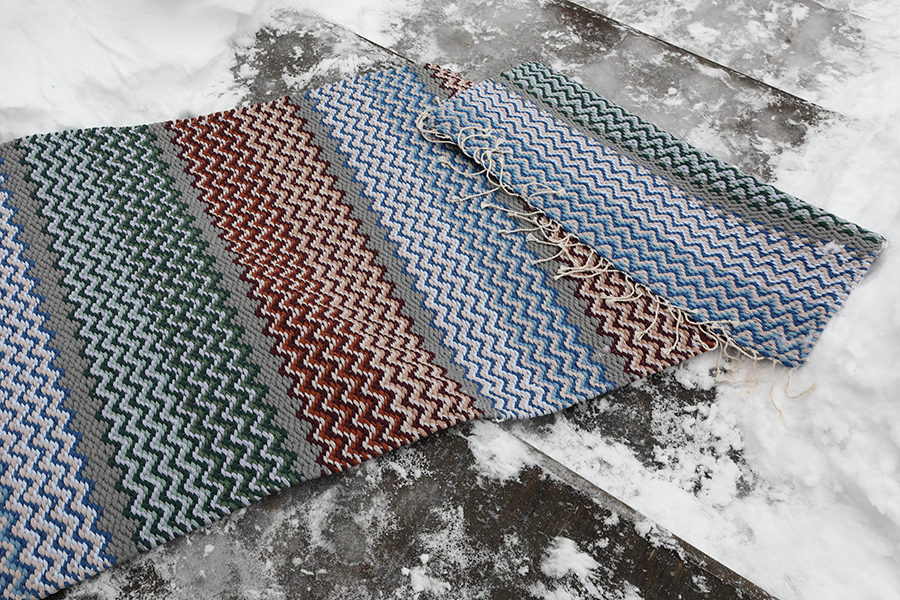| The warp | 12-ply Cotton Twine, tex 30×12, 1 kg = approx. 2 560 m, unbleached |
| Warp |
width 84 cm |
| Reed | 1 per dent in a 20-dent reed, metric (20/1) |
| Structure | Rosebath |
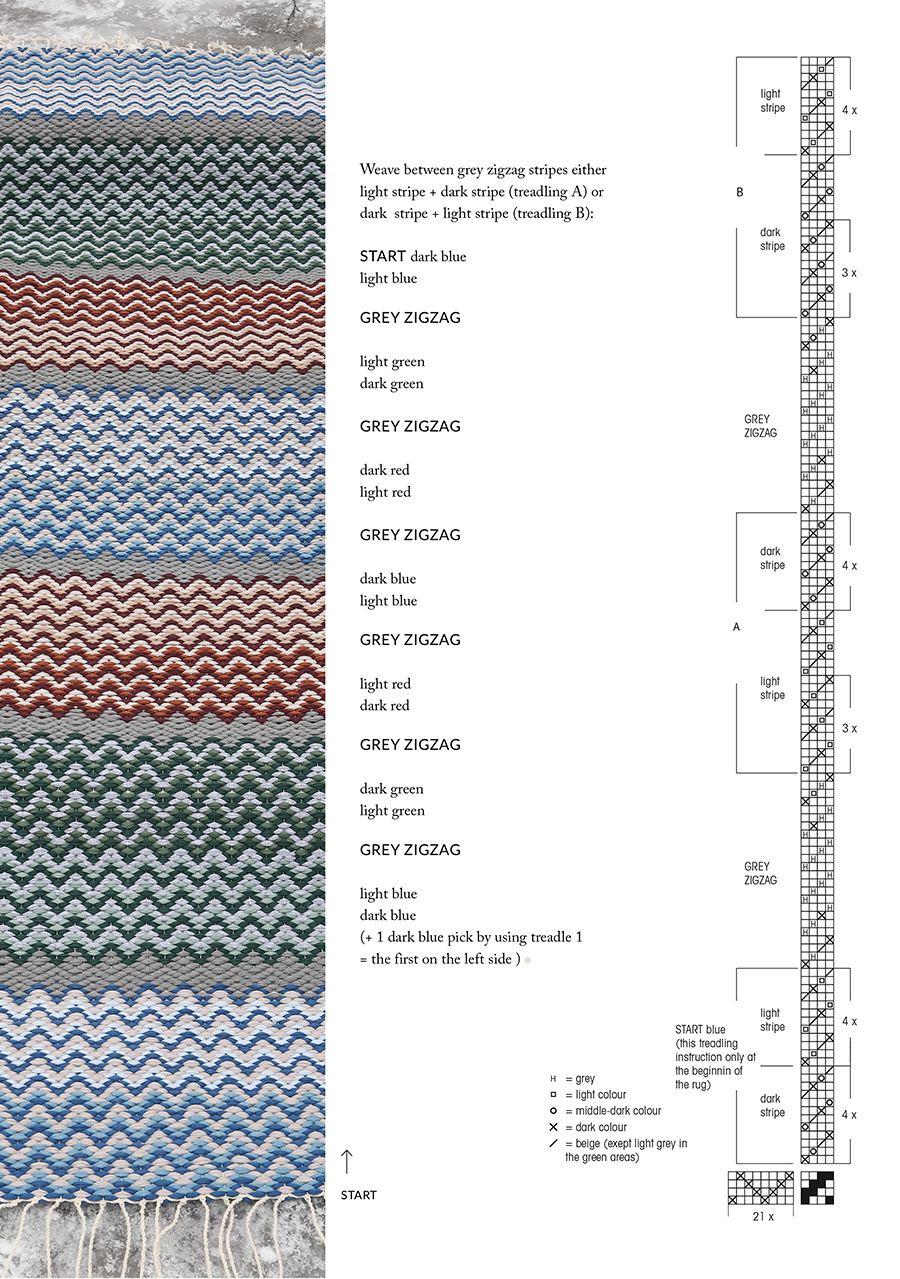
Weaving instructions
Weave 3 throws with Cotton Twine at the beginning and the end of the rug. Weave according to the treadling order alternaiting with three colours, exept the grey stripes. The edges continues similar if you weave grey stripes also with three shuttles.
The woven length is 178 cm.
We had floating selveges in this warp.
If the T-shirt yarn come with thin and thick qualities, you can double the thin yarn. On this carpet we doubled dark green, beige, plum and grey to ensure that all wefts are of the same strength.
Finishing
Tye the warp threads 2 + 2 using ovehand knots. Make twisted fringes and cut the ends to an eveng length. Press the rug though a damp cloth or steam iron.
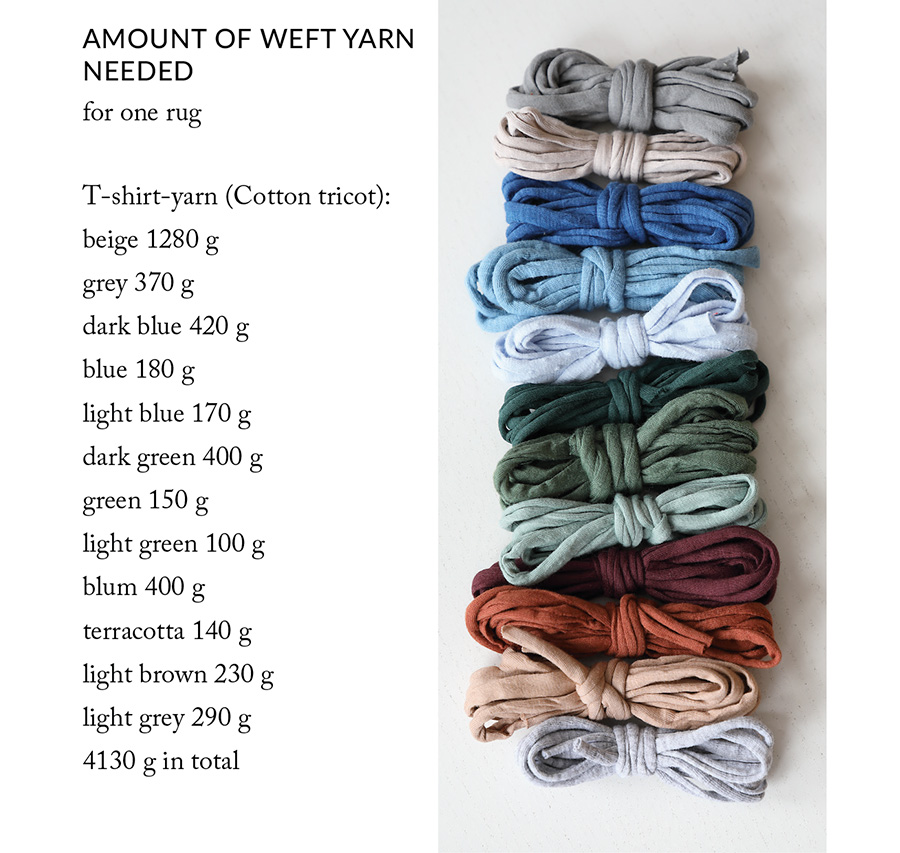
Rag rug project Zigzag
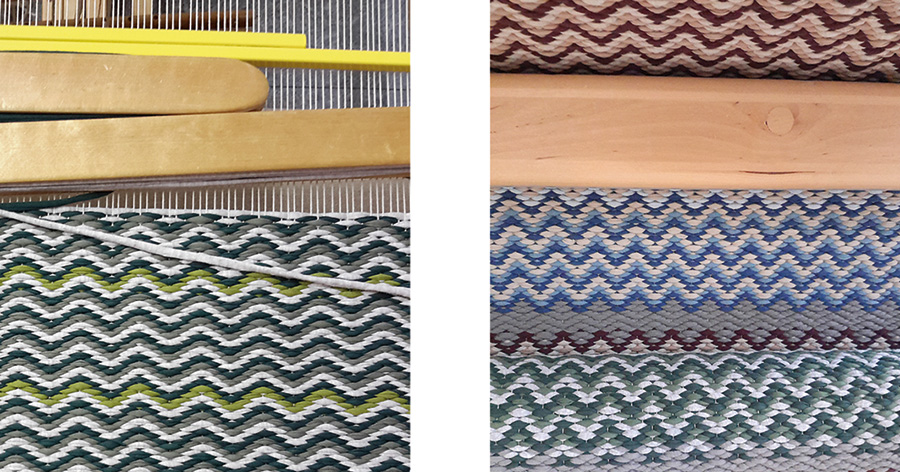
DESIGNING A RUG IS EXPERIMENTATION AND UNRAVELING
The best way to select the right-weighted and correct-colored wefts is to try them on the warp. It’s also a good idea to draw stripes and color combinations unless it’s a very simple pattern. A time-consuming experiment can be irritating, but it’s also rewarding. When the pattern is ready, the rest is just gliding the shuttle smoothly across the warp. You can sigh, relax, and enjoy the weaving.
First, we planned a simple pattern with only one bright zigzag stripe otherwise woven with the same three colours. However, the structure of the rug became too dense as the weaving progressed. We found the tricot weft too thin and didn’t want to weave the whole rug with double wefts. We unraveled the start and Kirsi designed a whole new pattern that became anything but simple. A beautiful showy pattern was broken out with a grey zigzag stripe. The treadling instructions for the March rug look long, but the same kind of colour order repeats through the rug. After the first grey zigzag, the pattern’s plot is already clear.
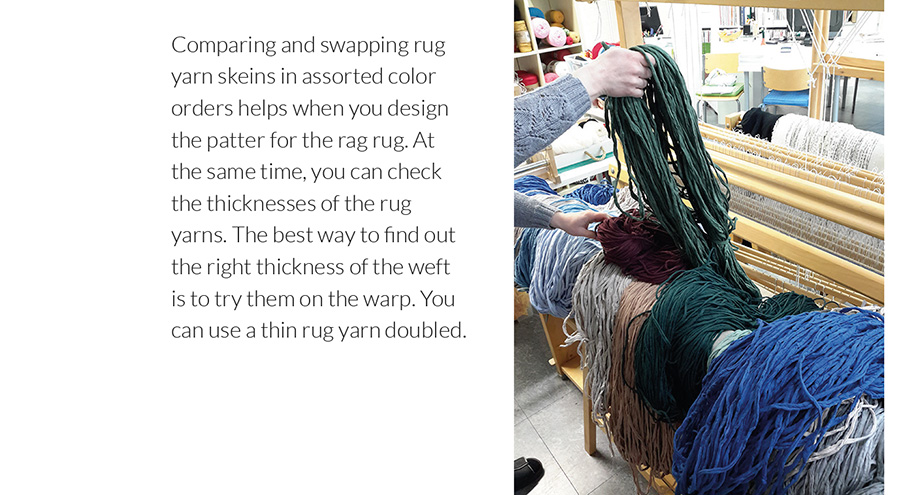
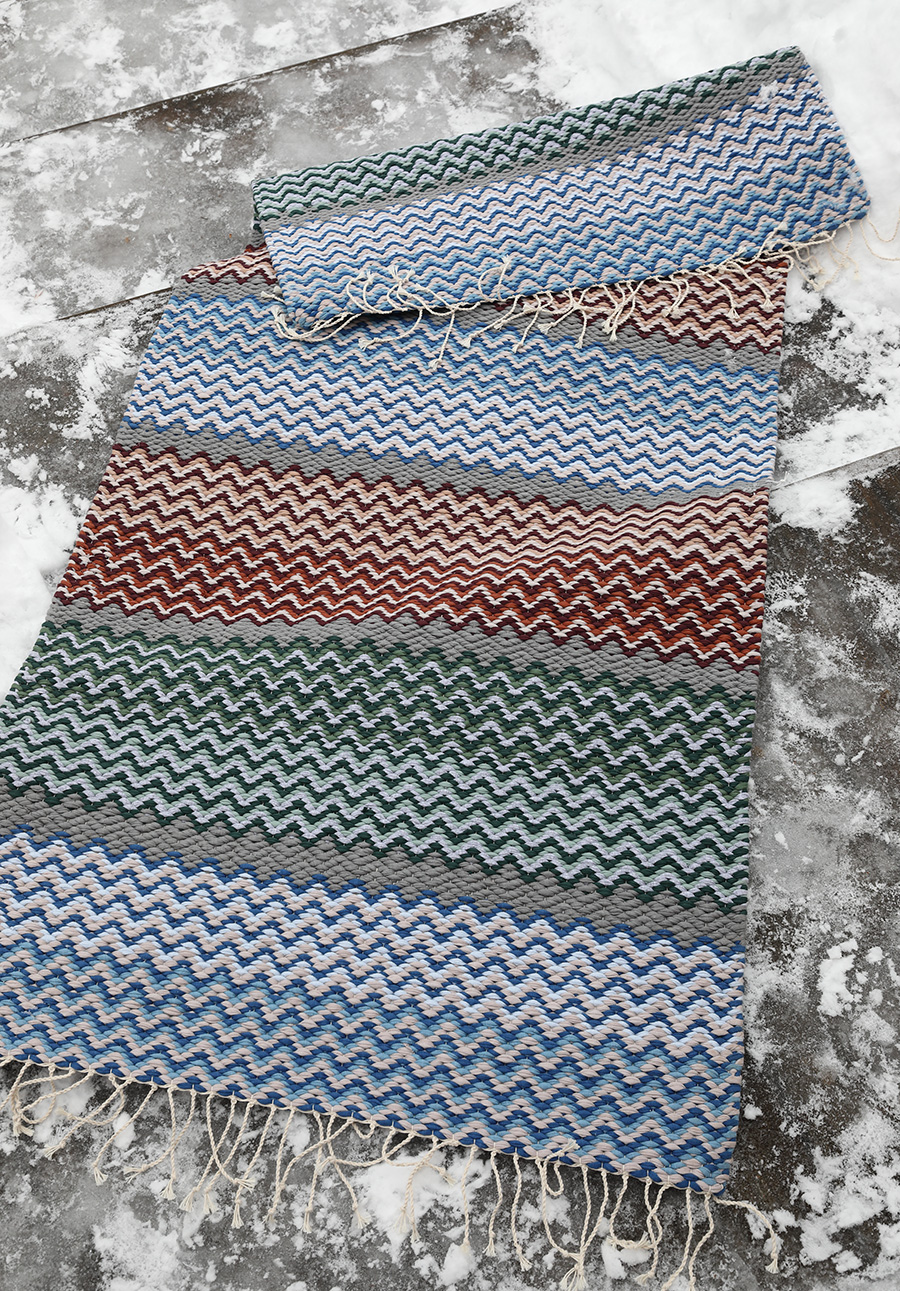
Rug off the loom in no time
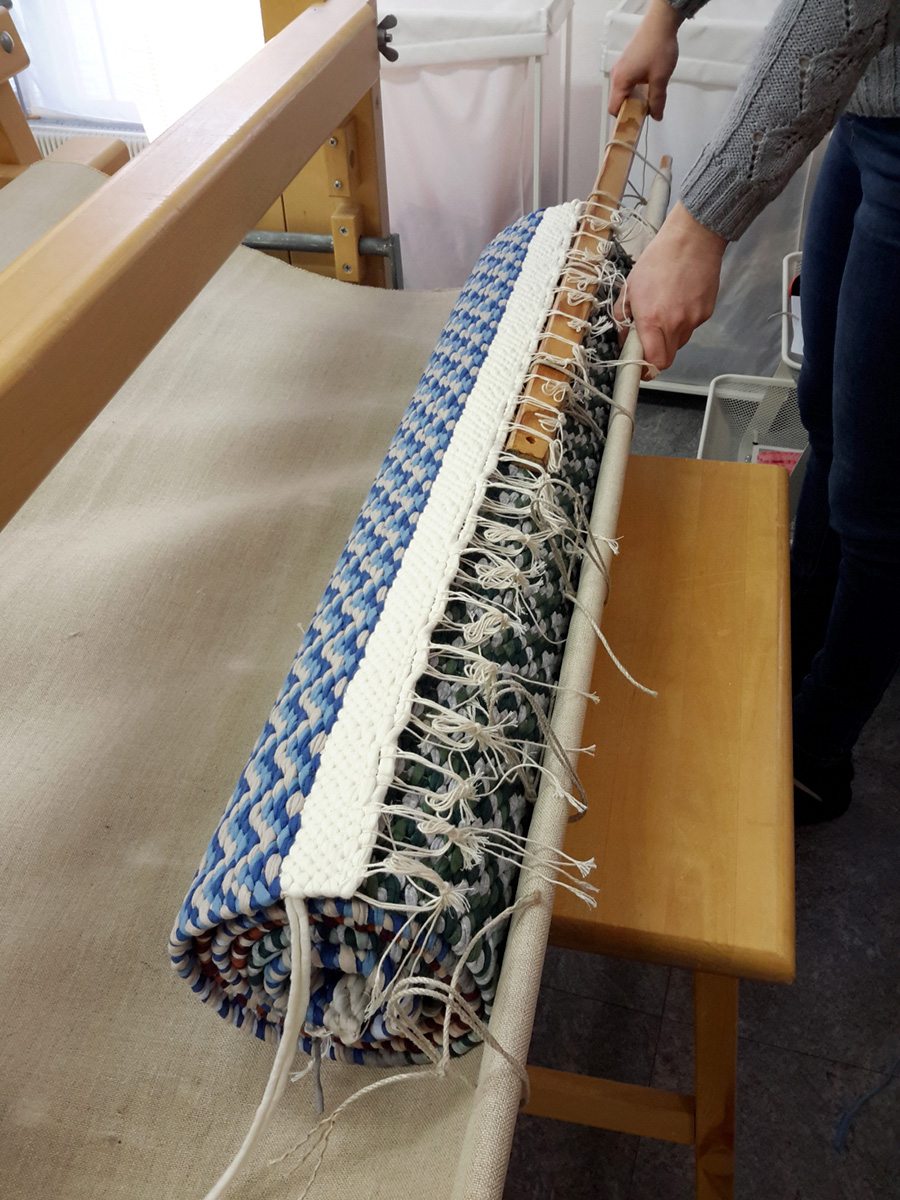
When weaving patterns, we have an established method of tying on the warp by using slipped overhand knots with a cord to even the warp. The warp is not wasted, and the tension is easy to adjust. The best part is that you can quickly get the fabric out of the looms. First, the tension cord is pulled out, then the apron rod, and the fabric is out of the loom. Picture 1.
There is not just one correct way to tie on the apron knots. Suitable knots for the highly slipping and hard warp threads are knots, where the threads are twisted around the rod and knotted with an overhand knot and finished with a bow knot. The warp threads can then be pulled tight, and the knot will not loosen. Yet it is easy to open. Picture 2.
